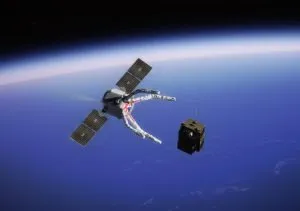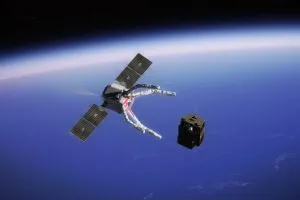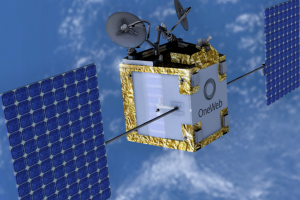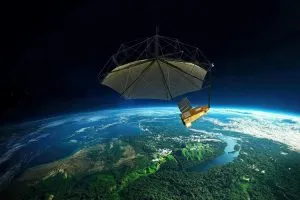The mission will demonstrate the feasibility of providing disposal services in space. Basically, offering potential solutions to the technical and operational challenges involved.
Phase 2
The London-based company has highlighted a number of technological milestones in Phase 2. The spacecraft’s robotic capture system, for example, has passed mechanical derisking tests, proving it can withstand the harsh launch loads.
ClearSpace-developed image processing algorithms have also been tested in a realistic environment. Specifically, to detect and track space debris.
Additionally, some of the mission’s close-proximity phases have been tested using a hardware-based spacecraft emulator, validating key operational sequences.
Finally, ClearSpace also says it has completed detailed programmatic estimates, to inform detailed mission planning.
“Achieving this milestone is a testament to the hard work, dedication, and innovation of our team and partners” said Rory Holmes, UK Managing Director, ClearSpace.
“The CLEAR mission is more than just a debris removal project—it’s a steppingstone towards a fully operational UK-led in-orbit servicing capability. By demonstrating the capability to design, build, test, license, launch, and operate this mission from the UK, we are proving that the UK has what it takes to lead in space sustainability.”
UK Space Agency
For its part, the UK Space Agency highlighted a wider significance.
“This is a significant milestone in our national ADR programme, and we are delighted that ClearSpace and partners have successfully delivered all requirements in this derisking-focused phase of work,” said Ray Fielding, Head of Sustainability, at the agency.
“We are now entering a particularly exciting period of further innovation which further supports our prioritisation of space sustainability and development of a national ISAM capability.”
Phase 3
The UK Space Agency was recently tendering proposals for Phase 3, which involves four elements.
First, the development and construction of a vehicle capable of removing two agreed pieces of debris (defunct UK-registered satellites). Second, the launch of the craft. Third, operation of the vehicle in orbit to remove two agreed elements of debris. Ad finally, for the vehicle to be “in a stable orbit and in a refuellable state at completion of mission”.
Image: ClearSpace – Artistic impression of the CLEAR Servicer approaching to the client object
See also: ClearSpace gears up for REFUEL.ME study of satellite refuelling
 Electronics Weekly
Electronics Weekly




